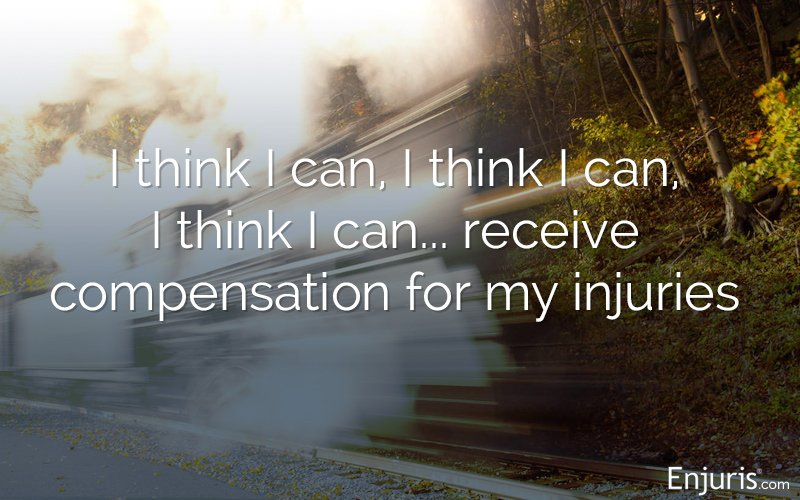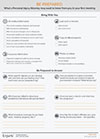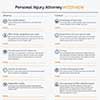
How to receive compensation following a train accident in the Hoosier State
In 1918, a locomotive engineer operating a Michigan Central troop train fell asleep at the throttle and plowed into the back of a Hagenbeck-Wallace Circus train just outside of Hammond, Indiana.
The circus train, which was carrying 400 circus performers, consisted of old wooden cars illuminated with oil lamps. Upon impact, the oil lamps ignited the wooden cars. A total of 86 passengers were killed and 127 were injured.
Though trains have become considerably safer over the last century, train accidents still happen today.
Let’s take a look at train accidents in Indiana, including why they happen, who’s liable, and what to do if you’re injured in one.
Indiana train accident statistics
Train travel is incredibly safe, especially when compared to car travel.
According to a recent study, you’re 20 times more likely to die in a car accident than in a train accident. That’s not a particularly comforting fact for those of us who drive often, but it puts the safety of train travel in perspective.
What’s more, the vast majority of railroad deaths have nothing to do with being a passenger on a train. That’s because most railroad deaths are the result of people walking on tracks or driving through a rail crossing.
Here are some numbers to consider:
| Train accident statistics (2019) | |||
|---|---|---|---|
| Location | Total train accidents | Train accident fatalities | Train accident injuries |
| United States | 2,216 | 120 | 807 |
| Indiana | 120 | 11 | 44 |
| Source: Federal Railroad Administration | |||
How do train accidents happen?
The Federal Railroad Administration (FRA), which investigates train accidents, identified the most common causes of train accidents:
- Track, roadbed, and structure problems
- Signal and communication errors
- Train operation errors (human factors)
- Mechanical and electrical failures
When a train accident happens, it generally takes one of the following forms:
- A pedestrian hit by a train. Most train-related fatalities are the result of a pedestrian being killed while walking along or across a train track.
- A collision with a motor vehicle. Some train accidents happen when motor vehicle drivers ignore crossing arms and warning lights.
- A train-on-train collision. Collisions between trains are rare but generally catastrophic.
- A derailment. A derailment happens when a train comes off the tracks. A recent study found that broken rails or welds were the leading cause of derailments, followed by human factors such as the improper use of switches.
Two of the 3 passengers in the Nissan were killed.
Video footage of the accident shows the Nissan coming to a complete stop before the railroad tracks. But, for some unknown reason, the car continued into the path of the train. The intersection where the crash happened doesn’t have crossing arms, just stop signs.
Who can be held responsible for a train accident?
To hold someone responsible for a train accident, you need to show that the person’s carelessness caused the accident. In legal terms, this means proving that the person was negligent.
In Indiana, negligence is established by proving the following 4 elements:
- Duty. The plaintiff must prove that the defendant owed them a duty of care.
- Breach. The plaintiff must prove that the defendant breached the duty of care.
- Causation. The plaintiff must prove that the injury was caused by the defendant’s breach.
- Damages. The plaintiff must prove that they actually suffered some harm.
The bottom line:
It’s a little easier to establish negligence against a train operator than it is to establish negligence against some other person.
Depending on the nature of the accident, one or more of the following parties may be liable for the train accident:
- The railroad company. Train operators and others who work for a train company are responsible for keeping passengers safe. If a railroad company employee fails to do so, the railroad company can be sued for negligence under the doctrine of respondeat superior.
- The track owner. Different sections of track could be owned by different companies or government entities. If an accident occurs because of a dangerous condition present on the track, the owner of that section might be liable.
- The manufacturer of the train or track. If the accident occurred because of a defective train or track component, the manufacturer may be liable.
- Motor vehicle driver or pedestrian. If the accident was caused by a driver or pedestrian entering the path of an oncoming train, the driver or pedestrian may be liable.
How does an injured passenger recover damages in Indiana?
If a passenger is injured in a train accident, the passenger must file a personal injury lawsuit against the responsible party to recover damages. In Indiana, injured plaintiffs can recover the following damages in a personal injury lawsuit:
- Economic damages. Economic damages refer to the monetary losses that stem from the train accident (for example, medical expenses, lost wages, property damage).
- Non-economic damages. Non-economic damages refer to the non-monetary losses that stem from the train accident (for example, pain and suffering and emotional distress).
How does an injured railroad employee recover damages in Indiana?
If a railroad employee is injured in a train accident, they can recover damages but the process for doing so is different. If the accident was caused by the railroad employee’s employer or a colleague, the railroad employee MUST file a Federal Employers Liability Act (FELA) claim.
FELA stands in place of workers’ compensation for railroad employees, but there are some major differences that railroad employees should know about:
| FELA | Workers’ compensation |
|---|---|
| Fault-based system (injured railroad employees must prove that their employer was negligent to recover damages) | No-fault insurance system |
| No damage limits | Damages are capped |
| Can recover noneconomic damages like pain and suffering | Prohibited from recovering non-economic damages like pain and suffering |
| Employees have 3 years to file a claim | Employees have 2 years to file a claim |
Fatal train wrecks and wrongful death cases
Though train accidents are rare, they can result in fatalities when they do happen. In 2019, 4% of train accidents were fatal.
So what happens if a passenger is killed in a train accident?
For starters, the family of the deceased train passenger can file a wrongful death lawsuit against the responsible party. Just like a personal injury lawsuit, the family will need to prove liability. Once liability is proven, the family can recover compensation for the loss of emotional, financial, and other support.
Steps to take after an Indiana train accident
If you’re injured in a train accident, the most important thing you can do is seek medical treatment. Once you’re sure you’re not facing any health emergencies, there are a few steps you should take.
First, take photographs of the scene and any visible injuries or property damage.
Second, write down the names and phone numbers of any witnesses. This includes passengers (who may ultimately file their own lawsuits), but also bystanders who may have witnessed the accident from a distance.
Third, keep track of all the medical treatment you receive. This information will help ensure you receive the damages you deserve.
 Damages/Expenses Worksheet
Damages/Expenses Worksheet
Damages worksheet to track expenses for your injury claim (medical treatment, property damage, lost wages, prescriptions)
Download in PDF format![]()
 Post-Accident Journal Form
Post-Accident Journal Form
Sample accident journal/diary to help you document the effect on your daily life
Download in PDF format![]()
Finally, you should strongly consider reaching out to an Indiana attorney near you who has experience with train accident cases. You can find one using our free online directory.
 Your First Meeting with an Attorney
Your First Meeting with an Attorney
A worksheet to prepare for your first meeting with a personal injury attorney – what to bring, what they'll ask
Download in PDF format![]()
 Personal Injury Attorney Interview Sheet
Personal Injury Attorney Interview Sheet
Worksheet with questions to ask a personal injury attorney to help determine if he or she will be a good fit for your case
Download in PDF format![]()
See our guide Choosing a personal injury attorney.
